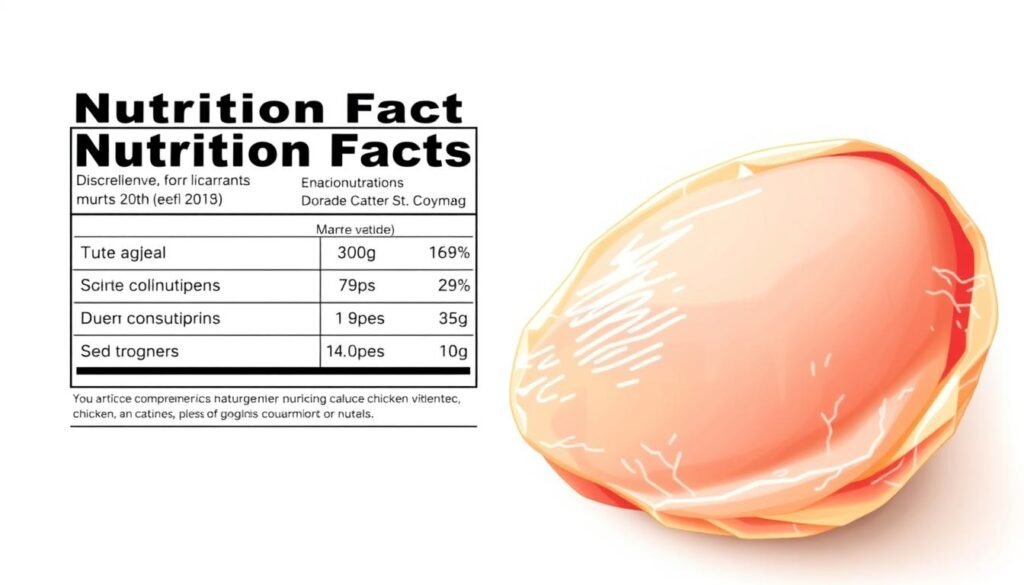Protein-packed and budget-friendly, poultry remains a staple in many diets. But what about cuts like chicken with rib meat? Consumers often wonder whether this option delivers the same nutritional benefits as whole-food protein sources.
Conflicting opinions swirl around processed poultry products. Some praise their convenience, while others raise concerns about additives. The EWG Food Scores rate certain brands moderately, like Perdue at 5.0/10, highlighting the need for closer examination.
This article explores protein quality, sodium levels, and ingredient transparency. Whether you prioritize affordability or clean eating, understanding these factors helps make informed choices.
Key Takeaways
- Poultry offers lean protein but processing methods affect nutrition.
- Some pre-packaged options contain higher sodium than fresh cuts.
- Food safety ratings provide insight into product quality.
- Balancing convenience and whole-food benefits matters for long-term health.
- Reading labels helps identify unnecessary additives.
Introduction: Understanding Chicken with Rib Meat
Many shoppers grab boneless breast cuts without noticing the fine print. These products often contain breast rib meat—a blend of lean breast tissue and remnants from the rib cage. Though subtle, this difference impacts nutrition and processing.

Walk into most U.S. food stores, and you’ll find rib meat in 85% of poultry cases. Brands like Perdue market Boneless Skinless Chicken Breast with Rib Meat as convenient options. Compared to pure breast cuts, these have slightly more fat but equal protein density.
The Environmental Working Group flags moderate processing concerns for such products. Even with “no artificial ingredients” claims, additives like sodium solutions may appear. Always check labels to spot these extras.
Nutritional Facts of Chicken with Rib Meat
Understanding the nutritional breakdown helps determine if this protein fits your diet. A 4-ounce serving delivers a balanced mix of macros, but the details matter for health goals.

Protein Content and Daily Value
With 25g of protein per serving, this option meets 50% of the daily value (DV). It supports muscle repair and satiety, making it ideal for active lifestyles. For context, the USDA recommends 46-56g daily for adults.
Fat Profile: Saturated Fat and Trans Fat
The saturated fat content is modest at 0.5g per serving, aligning with heart-healthy guidelines. Notably, it contains 0g trans fat—a plus for cardiovascular health. Compare this to fatty cuts like thighs (3g saturated fat per serving).
| Nutrient | Perdue (4oz) | USDA Recommended Daily Limit |
|---|---|---|
| Saturated Fat | 0.5g | 13g (for 2,000-calorie diet) |
| Sodium | 70mg (3% DV) | 2,300mg |
| Cholesterol | 25.2mg (8% DV) | 300mg |
Sodium Levels and Health Considerations
At just 70mg sodium (3% DV), this option suits low-sodium diets. Processed meats often exceed 400mg per serving, so check labels if sodium intake is a concern.
Calories and Carbs in Chicken with Rib Meat
Each serving packs 140 calories, primarily from protein. With 0g carbs, it’s keto- and paleo-friendly. The lean profile makes it versatile for calorie-controlled meals.
Health Benefits of Chicken with Rib Meat
Lean protein options don’t have to break the bank to deliver essential nutrients. The Environmental Working Group (EWG) ranks this cut among the most nutritious proteins for the lowest cost, offering a practical solution for health-conscious budgets.

High Protein for Muscle Building
Each serving provides a complete amino acid profile, including leucine—a key muscle-repair nutrient. With 25g of protein per 4oz, it fuels recovery post-workout or sustains energy throughout the day.
Nutrient Density and Daily Value
Beyond protein, this option delivers 40% of the daily value for selenium, boosting immunity. B vitamins (B6/B12) support metabolism, while zinc outperforms many plant-based alternatives.
| Nutrient | % Daily Value |
|---|---|
| Selenium | 40% |
| Vitamin B6 | 15% |
| Zinc | 8% |
Budget-Friendly Source of Quality Protein
At $3.99/lb versus $6.50 for organic breast cuts, it’s a smart choice for food tight budgets. Its versatility in recipes—from stir-fries to salads—maximizes value without compromising nutrition.
Potential Health Concerns and Drawbacks
While convenient, some poultry products carry hidden drawbacks worth examining. Even brands labeled “natural” may include practices or additives that conflict with health goals. Balancing convenience with awareness helps make smarter choices.
Use of Antibiotics and Additives
The CDC warns about antibiotic-resistant bacteria linked to conventional poultry farming. Overuse in production can diminish medication effectiveness for humans. Labels like “no antibiotics ever” offer safer alternatives.
Terms like “natural flavors” mask specific ingredients. A Harvard study notes BPA in packaging may disrupt hormones. Opting for fresh cuts or EWG Food Scores-approved brands reduces exposure.
Sodium and Saturated Fat: Moderation Needed
Though lean, some processed options inject sodium solutions for moisture. The Eat Well Guide suggests comparing labels—70mg per serving is ideal, but some hit 400mg.
Saturated fat stays low (0.5g), yet portion control matters for heart health. Pairing with veggies balances meals better than heavy sauces.
Processing Concerns and Ingredient Transparency
EWG Food Scores highlight gaps in USDA inspections for processing concerns. Even “clean” brands may use mechanical separation. Organic options often skip these methods entirely.
Key red flags include vague terms like “flavoring” or BPA-lined cans. Prioritize brands listing whole-food ingredients and transparent sourcing.
Conclusion: Is Chicken with Rib Meat a Healthy Choice?
Balancing nutrition and convenience, this protein option earns a mixed review. The EWG Food Scores highlight its lean protein benefits but flag processing concerns. For those prioritizing affordability, it’s a solid pick—just check labels for additives.
Enjoy 2-3 weekly servings paired with fresh veggies for a balanced diet. Store at 40°F or below to prevent bacterial growth. Brands like Perdue offer budget-friendly options, while organic varieties skip questionable additives.
Final verdict? Conditionally healthy. Smart purchasing—like choosing low-sodium or antibiotic-free cuts—makes all the difference. Studies confirm poultry’s role in reducing chronic disease when consumed wisely.




